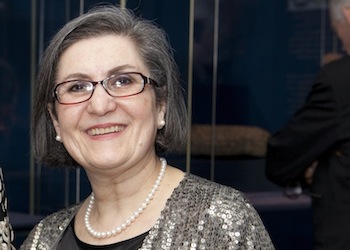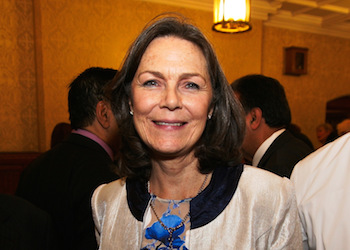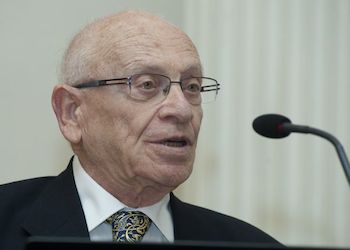The Idea of Iran: The Late Sasanian Period

he fourth in the series of ‘The Idea of Iran’ was held as a one-day symposium at which contributions by six eminent scholars covered aspects of the late Sasanian period.
Convenors

Dr Vesta Sarkhosh Curtis is Curator of Middle Eastern Coins at the British Museum and is responsible for its collection of pre-Islamic Iranian coins (from the third-century BC until the middle of the seventh-century AD), which includes both Parthian and Sasanian coins. She also looks after coins of the Islamic world beginning with the Umayyad and Abbasid periods and including coins of the Samanid and Buyid, Seljuk, Mamluk, Ayyubid and Fatimid, Ilkhanid and Timurid, Safavid and Qajar dynasties. Projected have included The Sasanian Coin Project, a collaborative project with the National Museum of Iran in Tehran, and now successfully completed. The result is a two-volume Sylloge of Sasanian coins of the third- to seventh-centuries AD while Dr Sarkhosh Curtis currently jointly-directs the International Parthian Coin Project, The Sylloge Nummorum Parthicorum (SNP), and is Joint Editor of the SNP series. This multi-institutional project will record Parthian coins of the third-century BC to the third-century AD found in London, Vienna, Tehran, Paris, Berlin, and the American Numismatic Society, New York.

Dr Sarah Stewart is Lecturer in Zoroastrianism in the Department of the Study of Religions at the School of Oriental and African Studies, University of London and Deputy Director of the London Middle East Institute, also at SOAS. She has been co-convenor of the ‘Idea of Iran’ symposia since its inception in 2006 and has co-edited five volumes in the ‘Idea of Iran’ publication series with I.B.Tauris. She serves on the Academic Council of the Iran Heritage Foundation and has been a longstanding Fellow of the British Institute of Persian Studies, most recently serving as its Honorary Secretary until 2013, in which year Dr Stewart co-organised the acclaimed exhibition: ‘The Everlasting Flame: Zoroastrianism in History and Imagination’. Her publications include studies on Parsi and Iranian-Zoroastrian living traditions and is currently working on a publication (in collaboration with Mandana Moavenat) on contemporary Zoroastrianism in Iran.
Speakers
- Nicholas Sims-Williams
- Shaul Shaked
- M. Rahim Shayegan
- James Howard-Johnston
- Philippe Gignoux
- Philip Huyse

The Sasanians in the East: A Bactrian Archive from Northern Afghanistan
Nicholas Sims-Williams, Research Professor of Iranian and Central Asian Studies, School of Oriental and African Studies, University of London
More than 150 documents written in Bactrian, the ancient language of northern Afghanistan, came to light during the last years of the twentieth-century. As well as revealing a previously almost unknown language of the Iranian family, these documents shed new light on the history and culture of the eastern Iranian world during the fourth to eighth-centuries C.E. This presentation will concentrate on the Bactrian documents from the Sasanian period, many of them still unpublished, which mention high officials in the Sasanian administration of Bactria, including the Kushan-shah, the vassal ruler of the former Kushan kingdom, and even the Shahan-shah himself. They also refer to the Hephtalites, who brought an end to Sasanian rule in the fifth-century, and to the Western Turks, who subsequently allied themselves with the Sasanians to defeat the Hephthalites.

Religion in the Sasanian Empire: Eran, Aneran, and other Designations
Shaul Shaked, Emeritus Professor, Hebrew University of Jerusalem
This idea of Iran in the Sasanian period is explored from several complementary points of view. There is the imperial approach to the subject, in which the King of Kings and the royal establishment occupy a central position in the distinction between Iranianism and the hostile non-Iranian world. There is also the point of view of the priestly establishment, which, while serving the interests of the state, also holds an indepenedent, sometimes critical, attitude towards the court. A more deeply religious attitude is also attested, one which stands aloof from politics. There is also evidence of non-conformist, perhaps sectarian, religious expressions, in opposition to the religious hierarchy. Much more variety is evident in the definitions of Iranian identity than what is seen in the scholarly descriptions.

The Roman Wars of the Sasanian King of Kings Shapur II
M. Rahim Shayegan, Musa Sabi Assistant Professor of Iranian Studies, University of California Los Angeles
The impetus for Shapur II’s large scale Roman campaigns undoubtedly lies in the inherent inequity of the peace treaty of Nisibis in 198, concluded between the Sasanian king Narseh – Shapur II’s grandfather – and Diocletian’s Caesar, Galerius. The disadvantageous terms of the treaty, to which narseh was forced to acquiesce under duress, were not intended to generate lasting peace with Persia. On the contrary, they prepared the ground for future hostilities. This presentation will investigate whether or not Shapur II’s bellicosity vis-a-vis Rome belonged to the realm of Realpolitik, or whether it was fuelled by a nostalgia for the Achaemenid period, which classical testimonies readily attribute to Shapur II.
State and Society in Late Antique Iran
James Howard-Johnston, Fellow, Corpus Christi College, University of Oxford
This paper first presents evidence for the capability of the Sasanian government – (1) the impressive military performance of the Sasanian state, best exemplified in the anni mirabilies of 572-6; (2) massive infrastructure projects, of which the two most notable were the fortifications of the Caspian Gates and the Nahrawan canal, both completed in the reign of Khusro I Anushirwan; and (3) the empire-wide distribution of a uniform silver coinage, issued from some forty mints. It then turns to the social order, to the conservation of which the Shahan-shahs were committed, but which, in practice, was far from stable. The period covered extends from the late fifth-century when defeat in the steppes triggered a convulsion of society (and a relatively bright light is cast on internal Sasanian structures by the Lazar of Pharb’s account of the Armenian rebellion of 482-4) through what was subsequently regarded as the apogee of Iran in late antiquity (the reign of Khusro I) to the final war for control of western Eurasia in the early seventh-century.
Prices and Drachms in the Late Sasanian Period
Philippe Gignoux, Former Professor for Religions of Ancient Iran, École Pratique des Hautes Études, Paris
Economic data for the Sasanian period is very scarce, but thanks to the new collection of Pahlavi dated parchments, located in the Bancroft Library, University of California Berkeley, recorded information on the cost of living at the end of this period has not become available. Pahlavi literature also features a lot of data on juridical matters, the content of which is related to heritage, slave prices, property, medicine, ritual ceremonies and so on. This lecture will utilise both sources. The Bactrians documents published by Nicholas Sims-Williams may also be compared to obtain the costs of fees in the breaking of agreements whilst the Berkeley documents on linen and leather provide us with the prices in drachms of wine, oil, honey, sheep and goats, garments, firewood, etc. Sometimes these prices correspond to those attested in the Pahlavi texts, namely the price of meat. Finally, an examination of the post-Sasanid Arabo-Persian works will reveal a strong inflation of the costs, even though they are often exaggerated or anachronistic.
Late Sasanian Society Between Orality and Literacy
Philip Huyse, Professor for Pre-Islamic Iranian History and Philology, École Pratique des Hautes Études, Paris
Ancient Iran long remained a society of limited literacy in which writing was the privilege of professional scribes in the service of the priests and the upper class. It is not until the sixth-century C.E. that we find more evidence of a widespread use of writing. The present study tries to demonstrate that written documents of an oral society cannot be judged in the same way as in a literate society. It furthermore provides some examples showing that late Sasanian society constitutes a turning point; it is probably at the time that the xwaday-namag “Book of Rulers” and the Avesta were written down.

